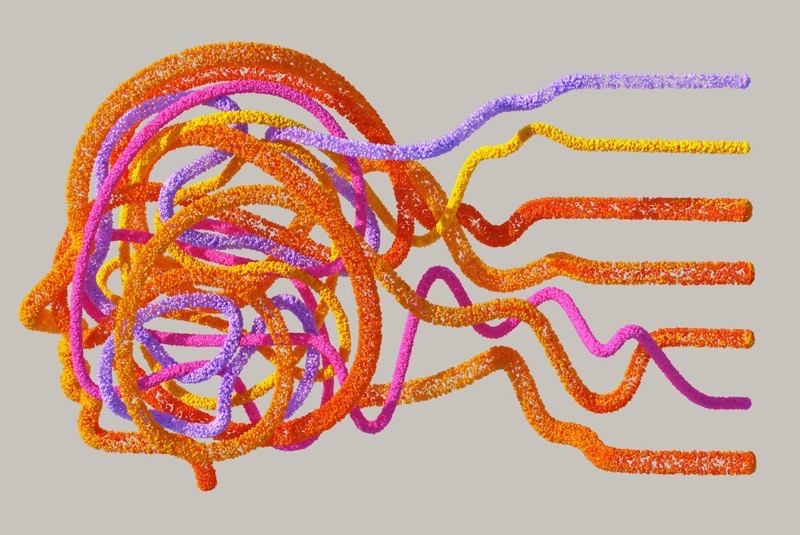The release of Chat GPT by Open AI in November 2022—later acquired by Microsoft Corporation—created a sensation in the tech world. The text-generating AI Chatbot was heralded as the next phase of technological advancement mimicking human cognition.
Technology gurus and aficionados consider this path-breaking and complex algorithm as the forerunner of human societies that are inevitably accelerating towards a technological singularity, where machine intelligence will likely surpass human intelligence in a couple of decades. Though machine learning, artificial intelligence, and software automation products are human inventions and tools for enhancing the quality of human life, they have, for decades, adversely encroached into the sphere of replacing human jobs rather than creating new ones.
According to Karim Lakhani of Harvard Business School, if the internet and the World Wide Web lowered the cost of transmission by the culmination of the web browser, AI will substantially reduce the cost of cognition in the future through Generative AI and Large Language Model (LLM) solutions. The implication, or the explicit writing on the wall, is that those jobs that require human creativity and imagination were in the domain of high IQ professionals—writers, artists, consultants, lawyers and doctors—are now exposed to AI automation.
These professions were future-proofed against a technological onslaught during the era of the Industrial Revolution, where mechanisation replaced human labour in agriculture at the turn of the twentieth century. Corporations that fail to integrate AI and Generative AI technologies will become laggards facing extinction in the ruthless race to deliver seamless experiences and transactions powered by artificial intelligence.
Tech behemoths like Facebook, Apple, Amazon, Google, Alibaba, Netflix, AirBnb and Uber have redefined customer experiences by employing complex algorithm-powered solutions. These companies create and capture value. Their operating models that constitute value chain activities are automated, rewired and positioned in the minds of the target segments through artificial intelligence.
Traditional brick-and-mortar companies engaged in pipeline businesses are forced to replicate the business model and customer experiences of these mostly platform businesses in terms of turnaround times, speed and efficiency. With the explosion and proliferation of smartphones, experiences optimised to smartphone universes have already become the critical differentiator of value propositions.
These legacy organisations are deprived of choices other than partially or fully automating their value chain activities and complying with the customer experiences received from AI-based companies. This warrants individual self-learning of existing employees in AI technologies and, most importantly, a shift in organisational change towards AI implementation and automation.
These quantum changes in the present and future business ecosystems are fraught with the downside risk of highly intelligent machines supplanting humans at scale to lower costs, improve processes and enhance productivity to sustain the competitive edge. If AI doesn’t replace humans en toto, humans proficient in and equipped with AI and Generative AI tools will undoubtedly and inevitably replace those without.
In the 1930s, Maynard Keynes, the influential economist, was disparaged by the emerging phenomenon of technological unemployment. The signs were everywhere, from automating telephone switching stations that employed American middle-class households to introducing new machinery in factories impacting the cigar, rubber and textile industries.
Local operators became extinct, and unemployment stood over twenty per cent, though partly attributed to the Great Depression. Keynes rightfully observed that labour-saving advances were “outrunning the pace at which we can find new uses of labour.” Karl. T. Compton, the president of MIT and a luminary scientist of the times, summarised the revolutionary reconfiguration of societies through the pervasive use of machines posed a messianic question whose relevance resonates to this day. In a 1938 MIT Technology Review article, he quipped:
Are machines the genii which spring from Aladdin’s Lamp of Science to supply every need and desire of man, or are they Frankenstein monsters which will destroy man who created them?
Smart robots, driverless cars, interactive chatbots, IVRs, and Chat GPTs are threatening job replacements in the twenty-first century. The only difference is the pace of displacement when humans have found ways to automate almost everything with mind-blowing low latencies by 5G technologies, the Internet of Things (IoT) and AI.
Capital expenditures (capex) are replaced with operational expenditures (opex) with the advent of cloud computing and advanced data analytics. In his 2017 farewell speech, President Barack Obama raised concerns about “the relentless pace of automation that makes a lot of good middle-class jobs obsolete.”
Long before industrial robots killed well-paying manufacturing jobs in the Rust Belt, President Roosevelt addressed Congress, saying:
We have not yet found a way to employ the surplus of our labor which the efficiency of our industrial processes has created.
Advances in technology have indeed created new and diverse industries in the past. Another MIT scholar, David Autor, and his collaborators corroborated this finding in a recent research paper, which concluded that sixty per cent of all jobs created in 2018 were non-existent before 1940.
Rapid advances in science and technology since the 1960s—coupled with falling telecommunication and transport costs—have engendered new industries marked by product innovations. Whenever there were epochs of product innovations in modern history, they always created jobs through greater productivity and lower costs by greater demand for products and services that necessitated hiring more blue-collar workers and white-collar professionals in the perpetuating growth phase of the production and consumption cycle.
Apple is a quintessential case study that has revolutionised the mobile smartphone industry. The company’s cutting-edge product innovations have not only spawned global supply chains for its products (such as iPhones, iPads, iPods, Macbooks, and Apple accessories manufacturers) but also created an ecosystem of platform businesses for millions of application developers.
Product innovation has to be juxtaposed with process innovation as the former generates new employment opportunities in new and existing industries, and the latter displaces hitherto employment by lowering or eliminating the biggest chunk of retail costs of a product or service, which is the cost of human labour in the P&L statement.
Jensen Huang, the charismatic CEO of trillion-dollar AI giant Nvidia, believes that humanity is on the brink of a new industrial revolution spearheaded by accelerated computing that enabled the rise of AI. He affirms that the era of general-purpose computing, using the CPU for everything, will soon become extinct.
From its invention in 1964, with the announcement of IBM 360, the CPU has run its course. The need of the hour is high-performance computing, sustainable energy efficiency and cost-effective computing facilitated by the new architecture of AI, which he thinks is ideal for the next-generation software called Generative AI.
Nvidia is in the process of developing computing technologies that go against the grain of conventional wisdom of the last 30 years; nobody should learn programming languages or coding. Artificial intelligence will close the technology gap among individuals, and all the employees in a company have the prospect of becoming technologists by virtue of AI and Generative AI solutions. The only programming language warranted in the future is human language prompts. That is a lot of software coding and programmer jobs at stake.
In the last fifteen years, the sluggish employment growth is largely attributed to advances in computer technology manifesting in industrial robots and automated translation services, according to Erik Brynjolfsson and Andrew McAfee of MIT Sloan School of Management. Their research paper sheds light on the widespread adoption of advanced AI technologies in the manufacturing, clerical, and retail sectors, which is diminishing job generation.
The rise of AI technologies is seeping into medicine, financial services, law and education services, too. From the beginning of the 2000s, a new phenomenon unbeknownst in economic theory has been observed: the divergence of productivity and employment generation, which they called the “great decoupling.”
Productivity growth—the economic value derived from a single unit of input (land, labour or capital)—has been the lynchpin metric of economic growth and social advancement for decades since World War II. It’s an uncanny paradox that in the US alone, productivity has reached record levels in the last 30 years. Innovation is at the pinnacle of human existence. However, the productivity pay gap has widened, and median real incomes have fallen adjusted to inflation with fewer jobs every decade.
Repetitive tasks across all industries have suffered automation, which was the primary source of livelihood for the low to mid-income groups, setting in motion a “hollowing out of the middle class.” Short technology obsolescence and rapid innovation have created a chasm between the skill sets of average middle-class households and the growing demands of the technical skills of evolving technologies. W. Brian Arthur, a former Stanford University professor, calls this transition an “autonomous economy,” where “digital processes talking to other digital processes and creating new processes” make a lot of jobs obsolete and redundant.
An IMF report states that at least sixty per cent of jobs in the advanced economies are exposed to AI and Generative AI infusions in the workplace. For emerging markets and least developed countries (LDC), the figures represented are forty per cent and twenty-six per cent of jobs impacted.
A McKinsey Global Institute study states that by 2030, approximately seventy per cent of global corporations will have implemented at least one type of AI technology in improving processes and increasing productivity. The same study indicates that by 2030, around fourteen per cent of the global workforce will have to change careers due to AI automation, robotics and digitisation.
Technology wizards like LinkedIn co-founder Reid Hoffman have been vociferous about the impending extinction of 9 to 5 jobs. A Goldman Sach research elucidates that by 2030, AI implementation and automation could potentially replace some 300 million full-time jobs globally, spawning unprecedented productivity gains and new industry types.
Researchers at Open AI and the University of Pennsylvania have predicted that educated and skilled white-collar jobs earning $80,000 annually will most likely be affected by AI technology-related automation. The Maverick entrepreneur Elon Musk, in an interview with former British Prime Minister Rishi Sunak, in his idiosyncratic style has made an outrageous prophecy that AI will replace all human jobs and humans will live on Universal High Income rather than Universal Basic Income (UBI), advocated by most social scientists as a safety net against the onslaught of technology-induced unemployment.
Leftist ideologues like Aaron Bastani, who congruent with Elon Musk’s views on AI automation, have proposed a utopian Fully Automated Luxury Communism (FALC), a cybernetic meadow where everything has been automated with minimal human supervisory control of machines and robots. This not-for-profit idealistic society will have a maximum of 12-15 hour work week with guaranteed universal income, housing, education and common ownership of automated entities in the true spirit of the Communist Manifesto.
The tremendous potential of AI and Generative AI, with staggering computing power and human-like cognitive abilities, trained in billions of parameters for pattern recognition and pattern matching, could be the harbinger of a society capable of solving complex solutions and purportedly improving human lives.
Humanity will witness a surge of Chat GPT, DALL-E2, Claude, Bard, Kiva Robots, Baxter Robots and IBM Watson with science fiction-like applications, intelligence and penetration into all walks of social life. However, human tryst with technology in the preceding 100 years has been a tale of growing inequality and corporate greed, which undermined corporate social responsibility to reap profits as the primary paradigm of its existence.
It leaves much to be desired that a genie will spring up from the AI lamp as a panacea of world ills, making it a better place. Instead, going by human vulnerability and an insatiable appetite for greed and selfishness, the world wouldn’t be amused if an AI Frankenstein monster were on the cards awaiting hapless humans in a dystopian future.
-30-
Copyright©Madras Courier, All Rights Reserved. You may share using our article tools. Please don't cut articles from madrascourier.com and redistribute by email, post to the web, mobile phone or social media.Please send in your feed back and comments to [email protected]











